Sapphire’s Radeon HD 5850 Toxic Edition: Our First Fully-Custom 5850
by Ryan Smith on February 18, 2010 10:00 PM EST- Posted in
- GPUs
Power, Temperature, & Noise
On the one hand, by overclocking this card Sapphire has ultimately increased the power draw of the card and the amount of heat it will be generating. On the other hand with the Vapor-X cooler, they’re better equipped to siphon out that heat, and to do so without making much in the way of additional noise. So let’s see how things pan out.
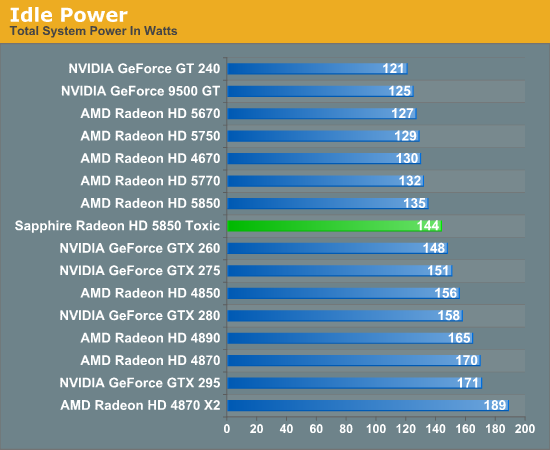
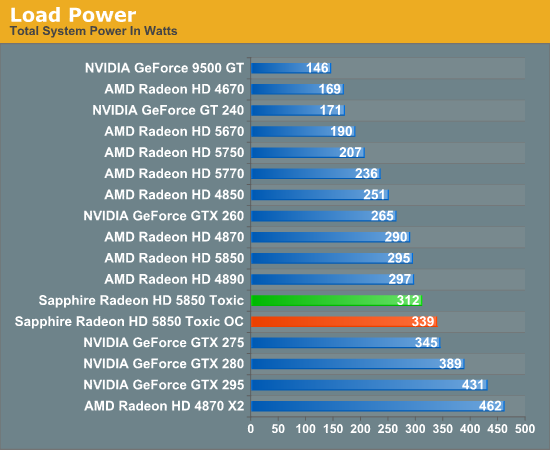
Right off the bat, the Toxic is at a disadvantage for power usage as we expected. At idle it operates at the same voltages and clocks as a reference 5850, so our 9W difference ultimately comes down to board differences; remember, the Toxic has a number of additional components compared to the reference card, particularly capacitors. Under load the difference is 17W, due to a combination of components and clock speeds. This is ultimately in-line with where you’d expect it to be based on the higher clock speeds.
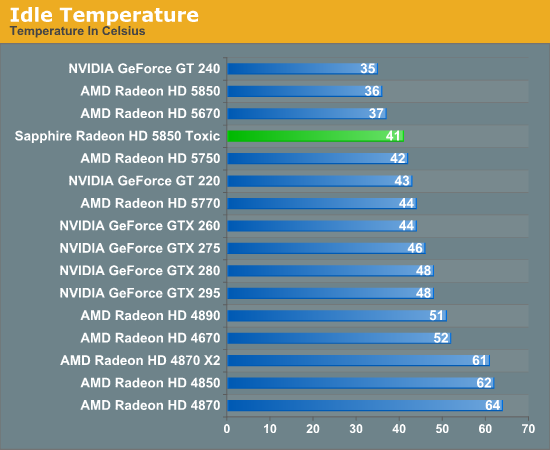
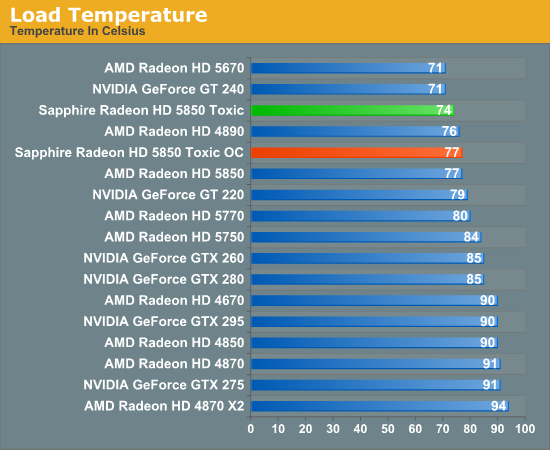
Moving to temperature, we can see the difference the Vapor-X cooler makes. The 5850 was always a particularly cool card, and surprisingly the Toxic does worse here. We’re measuring the temperature of the GPU, so any extra heat produced by the Toxic’s component selection shouldn’t be factoring in. The difference likely comes down to the coolers – a shrouded blower that fully exhausts hot air looks to be a more efficient option under these circumstances.
It’s under load where the Vapor-X cooler on the Toxic shines. Even though the card is overclocked and drawing an additional 17W, it still bests the reference cooler by 3C. It’s not a massive amount, but then again it’s only 3C warmer than even the 5670.
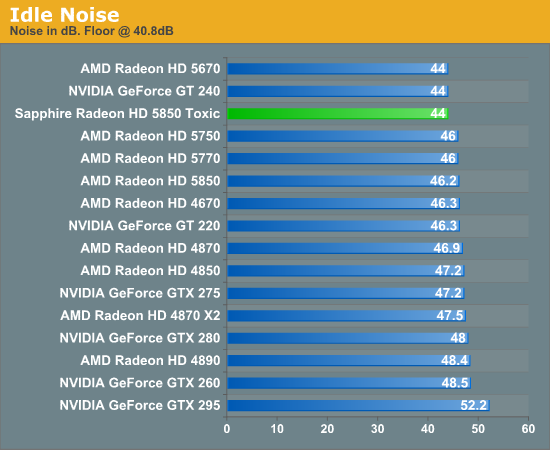
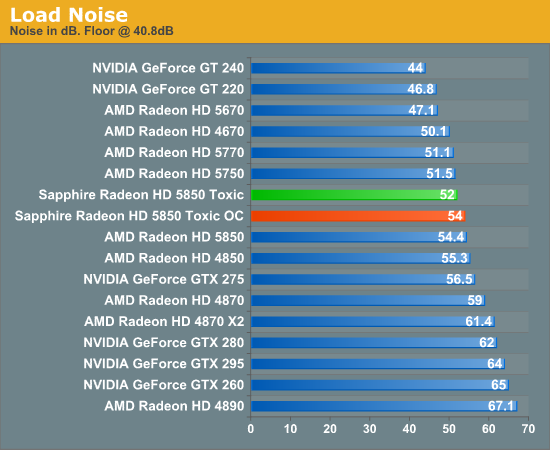
So the reference 5850 cooler may be a bit better at keeping temperatures down at idle, but it’s not the quietest option. Here the Toxic can do 2dB quieter. It’s a similar story under load, where it’s 2.4dB quieter than the reference cooler, and once again take in to consideration the fact that the Toxic is dispersing 17W of additional heat in the process.
As for our fully overclocked Toxic, the 895MHz/1175MHz clocks push power consumption up by another 27W to 339W under load. Even with the now 44W difference between it and the reference 5850, the noise generated by the Toxic and the GPU temperatures are in a dead-heat with the much slower reference 5850. There’s no question that the Toxic’s Vapor-X cooler is a superior cooler, and this leaves us wondering just how much more it can take if we could overvolt the GPU.










71 Comments
View All Comments
sdhfkjsdhfksjdhfks - Wednesday, March 3, 2010 - link
http://www.dearsales.com">http://www.dearsales.com
Sports, mainly by the advanced sports equipment.
Do you have enough good equipment? Of the world's most famous brands. Only two brands, jordans Nike.
If you want to have these two brands of equipment, and want to use the lowest price to buy,
Then I suggest you go to: http://www.dearsales.com">http://www.dearsales.com
More and more fashionable style. More favorable, the more you want.
Open the wardrobe is not yet found love after another the right clothes? So, also waiting for? Immediate action bar! Welcome to { http://www.dearsales.com">http://www.dearsales.com } sure you will find what you need. Moreover, the company has a good reputation, product quality standards, at reasonable prices. Over the years, has been well received by overseas friends for their support. Therefore, please rest assured purchase.
===== http://www.dearsales.com">http://www.dearsales.com ====